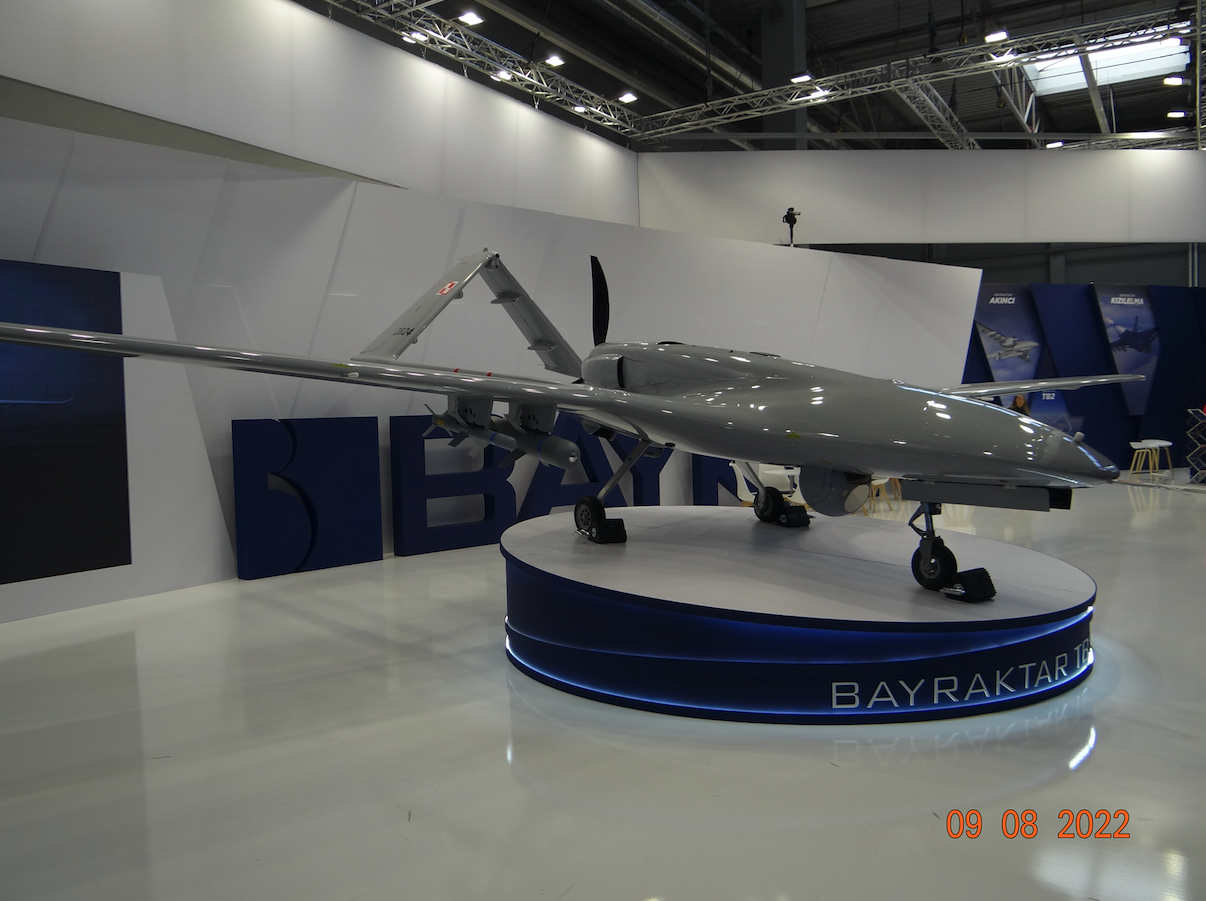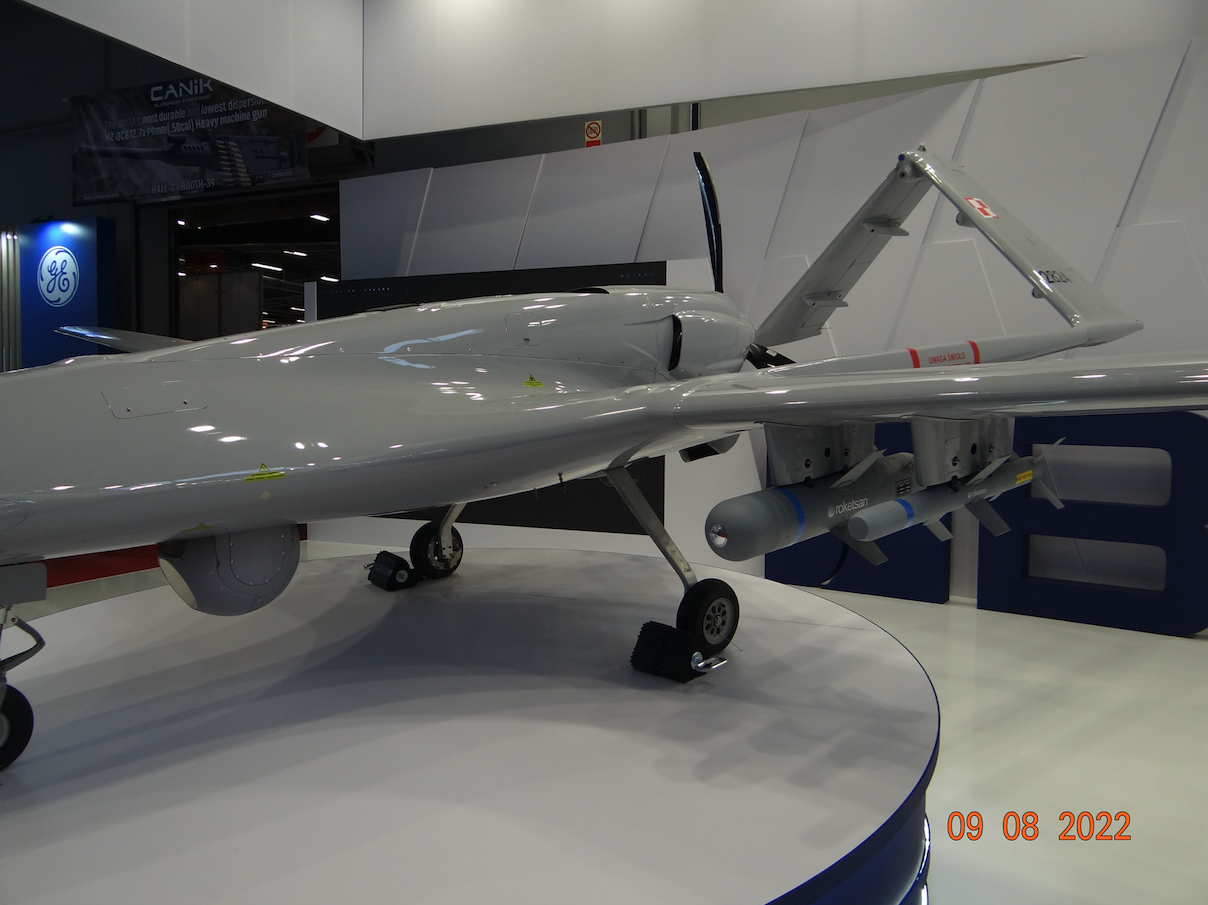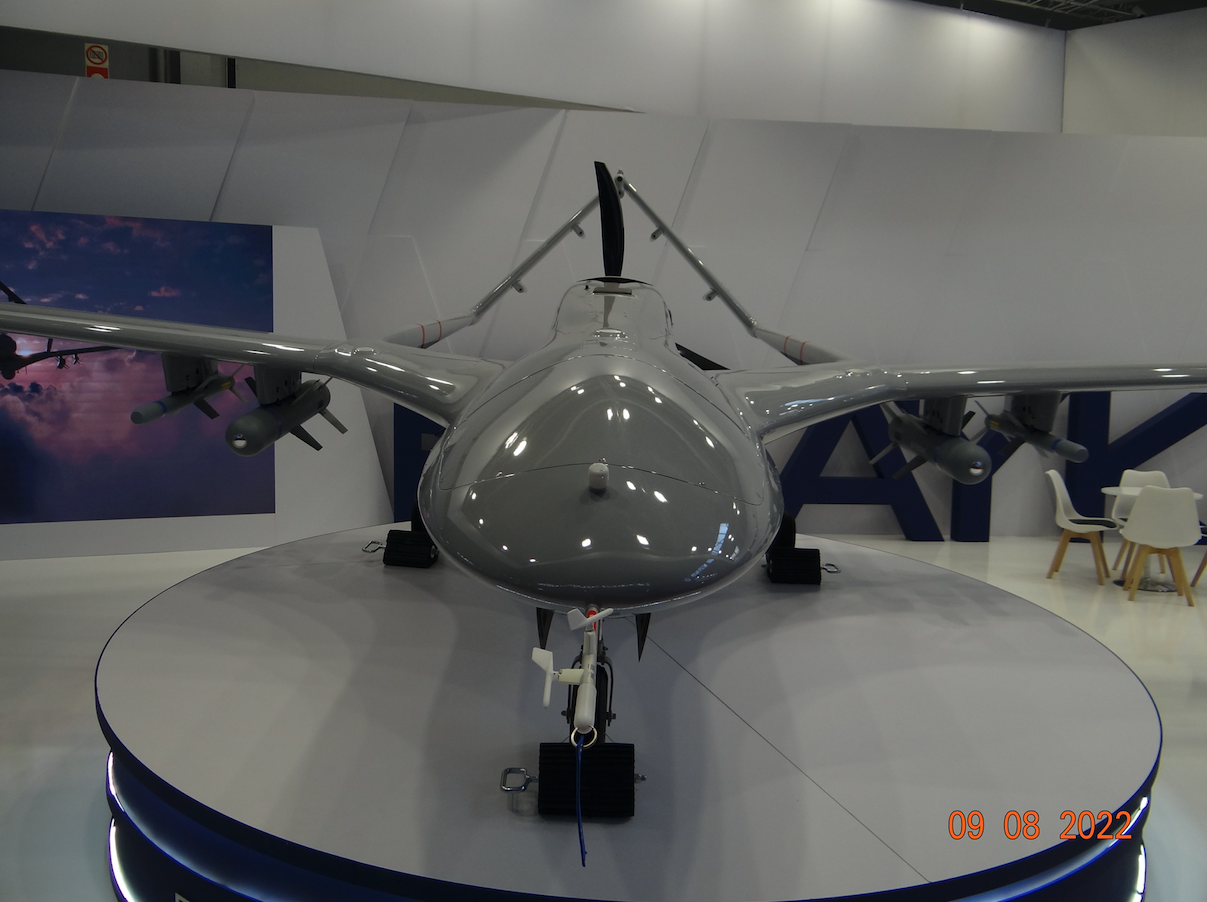Kraków 2022-09-14
Baykar Makina Bayraktar TB2.
Bayraktar TB2 is a Turkish combat unmanned aerial vehicle designed for medium-range long-haul flights. The device is capable of independent flight operations with the possibility of automatic take-off and landing. On four hooks under the wings, the apparatus can carry guided missiles and other weapons.
The camera is produced by the Turkish company Baykar Makina Sanayi ve Ticaret A.Ş., abbreviated as Baykar Makina. The main designer of the camera was Selçuk Bayraktar. The camera was created for the needs of the Turkish army to be used against Kurds, as well as in the fighting in Iraq and Syria. The camera has already been used in several armed conflicts around the world.
The development of the Bayraktar TB2 was triggered by the US ban on the export of armed drones to Turkey, due to fears that they would be used against Kurds in Turkey and in other conflicts in the Middle East. Unfortunately, although Turkey belongs to NATO, it pursues its own military policy, which is not always in line with NATO’s interests. For example, Turkey bought S-300 missiles in Russia.
Bayraktar TB2 devices are monitored and controlled by the crew at the ground command and control station, together with the use of BAL-borne weapons. The largest operator of Bayraktar TB2 aircraft is the Turkish army, but the export versions were sold to the armed forces of many countries around the world, including Poland.
The Baykar Makina company began work on a new unmanned combat system commissioned by the Ministry of Defense Industry, after experience with the first tactical unmanned aerial vehicle, the Bayraktar TB1, which was delivered to the Turkish army in 2011. BAL Bayraktar TB2 made its first flight in August 2014. In 2015, tests were carried out with the firing of guided missiles from the camera deck. There were also tests on the use of laser-guided bombs.
Initially, the camera used components from many foreign companies. For example, Rotax 912 engines. When the owner of Rotax – Bombardier – learned that a civil engine was used for military purposes, it stopped exporting these engines to Turkey. In 2020, the Bombardier concern verified the countries to which the Rotax engines were sold and removed from the list the countries that did not comply with the concluded agreements. Rotax motors are manufactured at a factory in Austria. The same happened with the oto-electronic head, which was produced by the Wescam company in Canada.
There were suspicions that UK companies were working in the development and production of the Bayraktar TB2. However, the bosses of Baykar Makina firmly denied this. It was about weapon hooks mounted under the wings. The Turks said this system was their original. And in 2020, the UK’s Department of International Trade revealed details of its cooperation with Turkey, suggesting that there was no transfer of critical technology to Turkey.
In October 2020, the use of the Canadian Wescam MX-15D oto-electronic system in the Bayraktar TB2 was revealed. This was done by the Armenians after losing the camera and retrieving the MX-15D system from its wreckage. Canada has suspended deliveries, and Turkey has said it already has its own replacements. However, most customers for Bayraktar TB2 cameras, including Ukraine, Poland, Morocco and Kuwait, refused to purchase the Aselsan CATS electro-optical head (Turkey) and decided to order Wescam MX-15D heads through an authorized distributor. One of the reasons is the increase in head weight from 45 kg to 61 kg (99 to 134 lb) and worse optical parameters.
One Bayraktar TB2 camera is estimated to cost $ 5 million. The company does not provide the price, because everything depends on the number of BALs purchased, the number of the control station (GCS), simulators and the ordered weapons.
In 2021, the Polish Air Force ordered 24 cameras, making Poland the first NATO and EU country to buy Bayraktar TB2. The first batch of control devices and stations was delivered in 2022.
In 2022, BAL Bayraktar TB2 did well in Ukraine’s defense war against rogue Russia that invaded sovereign Ukraine on February 24, 2022.
Construction Bayraktar TB2.
The airframe is made of composites (carbon fiber) and partly aluminum. The body of the apparatus is of a residual type, very flattened to generate additional lift. The wings have a small chord and a large span. Two tail beams led from the wings to which the inverted V-shaped ballasts were mounted. At the top of the tail there are cameras for observing the aircraft, especially during take-off and landing. The internal combustion engine is positioned at the rear of the fuselage and it moves a 3-blade propeller. The fuel is placed in soft tanks. The electronics ensure the correct sequence of emptying the tanks so that the apparatus is balanced all the time.
Under the wings there are four hooks for weapons: guided bombs and guided missiles. All weapons are air-to-ground (air-to-water) class.
The camera has a fixed two-legged main landing gear with single wheels and a front landing gear that retracts into the fuselage. The protruding front landing gear makes it difficult to use the oto-electronic head, which is located under the fuselage.
The device is equipped with an electrical system with lithium-ion batteries and an alternator. The camera is equipped with an inertial navigation system that allows you to return to the take-off aerodrome, even with completely lost communication. The navigation system uses the GPS system as standard.
The Ground Control Station (GCS) is based on a NATO-compliant, mobile-type shelter unit that is equipped with command and control systems. One BAL is operated by three people: the pilot, cargo operator and mission commander. Each operator has two screens in front of him along with the operator interface software used for real-time command, control and monitoring.
Data T-T Bayraktar TB2:
Long 6.5 m (21 ft 4 in). Wingspan 12 m (39 ft 4 in). Take-off weight 700 kg (1,500 lb). Load weight 150 kg (330 lb). Fuel supply 300 liters (79 US gal). Internal combustion engine, four-cylinder, four-stroke, with a power of 100 HP (75 kW). Top speed 120 knots (220 km / h). Cruising speed of 70 knots (130 km / h). A maximum range of over 4,000 km (2,200 nm). Operating ceiling of 25,000 ft (7,600 m). Flight time up to 27 hours.
Written by Karol Placha Hetman



